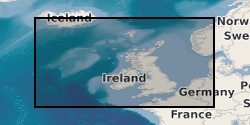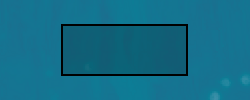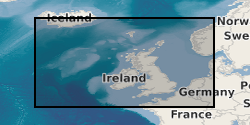geoscientificInformation
Type of resources
Available actions
Topics
Keywords
Contact for the resource
Provided by
Years
Formats
Representation types
Update frequencies
Scale
Resolution
-
Geological model comprising artificial ground and superficial deposits in the city of Cardiff. Undifferentiated bedrock is included beneath the superficial deposits. This model provides a geological framework model and calculated surfaces for the superficial deposits for the city of Cardiff, principally Till, Glaciofluvial deposits, Alluvium and Tidal Flat Deposits.
-

The British Geological Survey has collected over 50000 offshore samples using grabs, dredges and shallow coring devices (to a maximum depth of 6m below the sea bed). The collection also includes additional third party data and has assisted in the creation of BGS Marine Geology Maps. The distribution is variable, but in general there are sample stations spaced about every 5 - 10km across the entire UK Continental Shelf (UKCS). In some localised areas the sampling density is much higher. The data held includes digital data and analogue records (sample data sheets), plus associated physical sample material. Sample data sheets which have been scanned contain index information and geological descriptions and are more detailed from 1983 onwards. Coded geological descriptions were entered on sheets which were subsequently digitised, and this information is available for about 10,000 samples. The data also includes results of analyses such as micropalaeontological examination or age dating. Particle Size Analysis, geochemistry and geotechnical data are described in separate metadata entries. Sample material are managed as part of the BGS Materials collection and are available for examination and subsampling. The data are stored within the National Geoscience Data Centre (NGDC) and Marine Environmental Data and Information Network (MEDIN) Data Archive Centre (DAC) for Geology and Geophysics. Data are delivered via the BGS Offshore GeoIndex www.bgs.ac.uk/GeoIndex/offshore.htm.The activity and scan layers contains location information, metadata and links to scanned sample datasheets/core logs, and the geological, geotechnical, geochemical and sea-bed sediment data layers contain observations and/or measurements as digital values. The data are applicable to a wide range of uses including environmental, geotechnical and geological studies. Reference: Fannin, NGT. (1989) Offshore Investigations 1966-87. British Geological Survey Technical Report WB/89/2, British Geological Survey.
-

The British Geological Survey hold a collection of data recorded during marine geophysical surveys which includes digital data and analogue records. These data result from approximately 350,000 line kilometres of multi-instrument geophysical survey lines. The data include seismic, sonar, magnetic, gravity, echo sounder, multibeam bathymetry and navigation data. The seismic data are mainly for airgun, sparker, boomer and pinger. The data were primarily collected by BGS and the collection also includes additional third party data. The data are primarily from the UKCS (United Kingdom Continental Shelf). The data are stored within the National Geoscience Data Centre (NGDC) and the Marine Environmental Data and Information Network (MEDIN) Data Archive Centre (DAC) for Geology and Geophysics. The majority of legacy geophysical paper records are available as scanned images viewable via the BGS Offshore GeoIndex www.bgs.ac.uk/GeoIndex/offshore.htm. Other records can be scanned on request. Older records are of variable quality. Data not yet available online including segy are available on request enquiries@bgs.ac.uk. The data are applicable to a wide range of uses including environmental, geotechnical, geophysical and geological studies. Reference: Fannin, NGT. (1989) Offshore Investigations 1966-87. British Geological Survey Technical Report WB/89/2, British Geological Survey.
-

The 3D multi channel seismic data were acquired as part of a collaborative investigation into models of magmatic segmentation between the Scripps Institute of Oceanography and BIRPS (the British Institutions Reflection Profiling Syndicate). The 3D EPR (East Pacific Rise) ARAD (Anatomy of a Ridge Axis Discontinuity) EW9707 cruise was undertaken in September and October 1997 to provide both refelction and wide-angle seismic data for the study of the overlapping spreading centre (OSC) at 9 degrees 3 minutes N on the East Pacific Rise. The data were acquired with a single source and a single streamer with a nominal line spacing of 100 m. The 3D-EPR ARAD survey was a joint NERC/NSF (US National Science Foundation) funded project and the copyright for this survey is held jointly. Reference: Bazin, S. Harding, AJ. et al. (2001) Three-dimensional shallow crustal emplacement at the 9 degree 03 minute N overlapping spreading center on the East Pacific Rise, Journal of Geophysical Research.
-

The data set consists of the results of particle size analysis (PSA) performed on approximetaly 29,000 sea-bed sediment samples collected by BGS from the UK Continental Shelf and adjacent deep water areas, mostly using sediment grabs, but also sediment corers on occasions. Measurements were also made on approximately 8000 downhole sub-samples from shallow cores and boreholes. Data from other UK organisations have also been added to the PSA dataset. The data are stored as part of the National Geoscience Data Centre (NGDC) and the Marine Environmental Data and Information Network (MEDIN) Data Archive Centre (DAC) for Geology and Geophysics. Data are delivered via the BGS Offshore GeoIndex www.bgs.ac.uk/GeoIndex/offshore.htm Seabed Sediment Data layers.
-

The Marine Aggregate Levy Sustainability Fund (MALSF) commissioned a series of Regional Environmental Characterisation (REC) surveys via the Marine Environment Protection Fund (MEPF) to develop understanding of submerged habitats and heritage in Britain. The aim was to acquire high quality data to enable broad scale characterisation of the seabed habitats, their biological communities and potential historic environment assets. The surveys were conducted in the following areas - Outer Bristol Chanel (2003 – 2005), Eastern English Channel (2005 – 2006), South Coast (2007 - 2010), Outer Thames (2007), East Coast (2008 - 2009), Humber (2008 - 2009). The Geology and Geophysics component of the data are archived by British Geological Survey (BGS) in the Marine Environmental data and Information Network (MEDIN) Data Archive Centre (DAC) for Geology and Geophysics. The data includes bathymetry, sidescan sonar, sub-bottom profiler, magnetometer, seabed video and photographs, Particle Size Analysis (PSA) data, vibrocore (logs and images). Data are delivered via the BGS Offshore GeoIndex www.bgs.ac.uk/GeoIndex/offshore.htm. Additional data are available on request enquiries@bgs.ac.uk. Other data types have been archived with the other MEDIN DACs as appropriate (UKHO DAC for bathymetry data and DASSH DAC for biological data). The MALSF ceased operation at the end of March 2011 (http://www.marinealsf.org.uk/).
-

The North Sea Interactive (NSI) project was an 8-month NERC funded project led by Heriot-Watt University, in collaboration with the BGS and NOC. The aim of the project was to develop a new decision-support tool that would translate existing marine environmental data into an interactive mapping product for the offshore oil and gas industry. The objectives of the project were achieved through the integration of the North Sea Benthos database (UKBenthos) with NERC's regional North Sea marine sediment data (BGS) and layers of modelled hydrodynamics (NOC). Aligning the biological, chemical, geological and hydrodynamic datasets in a single GIS product provides the oil industry and government regulators with a practical means of accessing this important archive of environmental data. The North Sea Benthos database (UKBenthos) was developed by Heriot-Watt University on behalf of UKOOA (now Oil and Gas UK) in the 1980s. Alongside macrobenthos, the database includes sediment properties, concentrations of aromatic compounds, total oil and metals. It currently includes data from 1975 to 2011 from 237 platforms and is continually being updated as new survey results are received by Oil and Gas UK.
-
Multibeam survey collecting bathymetry and backscatter to give full coverage with existing coverage from previous survey in 20XX. WGS84 latitude and longitude co-ordinates collected by Differential Global Positioning System (D-GPS), depths corrected to Chart Datum (CD). Raw and processed data delivered to Centre for Environment, Fisheries and Aquaculture Science, UK (Cefas) complete with georeferenced mosaics and GeoTiffs images. Drop Camera collecting video and still images of the seabed habitats within Cape Bank rMCZ.Grab survey collecting PSA and benthin infaunal samples from seabed habitats within Cape Bank rMCZ. These data are archived with the Marine Environmental Data and Information Network (MEDIN) Data Archive Centres (DACs) including the British Geological Survey (BGS) DAC for geology and geophysics, The Archive for Marine Species and Habitats Data (DASSH) and the United Kingdom Hydrographic Office (UKHO) bathymetry DAC.The full site data package (excluding raw bathymetry) is also available on request from BGS.
-
This sampling and geophysical survey has been carried out by, Institute of Geological Sciences (IGS) now British Geological Survey (BGS) for BGS, the survey took place from August to December 1974 in the Bristol Channel, Irish Sea and English Channel on board the MV Whitethorn. The purpose was to collect data as part of a geological mapping programme. Sample data were collected using Drilling equipment,: Rock Gravity Corer, Sediment Gravity Corer, Vibrocorer and Shipek Grab. These data are archived by BGS. Details of the survey are contained in IGS Annual Report 1974 and IGS report 79/8.
-
Details unknown. (Grab sampling, bathymetry and backscatter). These data are archived with the Marine Environmental Data and Information Network (MEDIN) Data Archive Centres (DACs) including the British Geological Survey (BGS) DAC for geology and geophysics, The Archive for Marine Species and Habitats Data (DASSH) and the United Kingdom Hydrographic Office (UKHO) bathymetry DAC. The full site data package including raw is also available on request from BGS.
 BGS Data Catalogue
BGS Data Catalogue